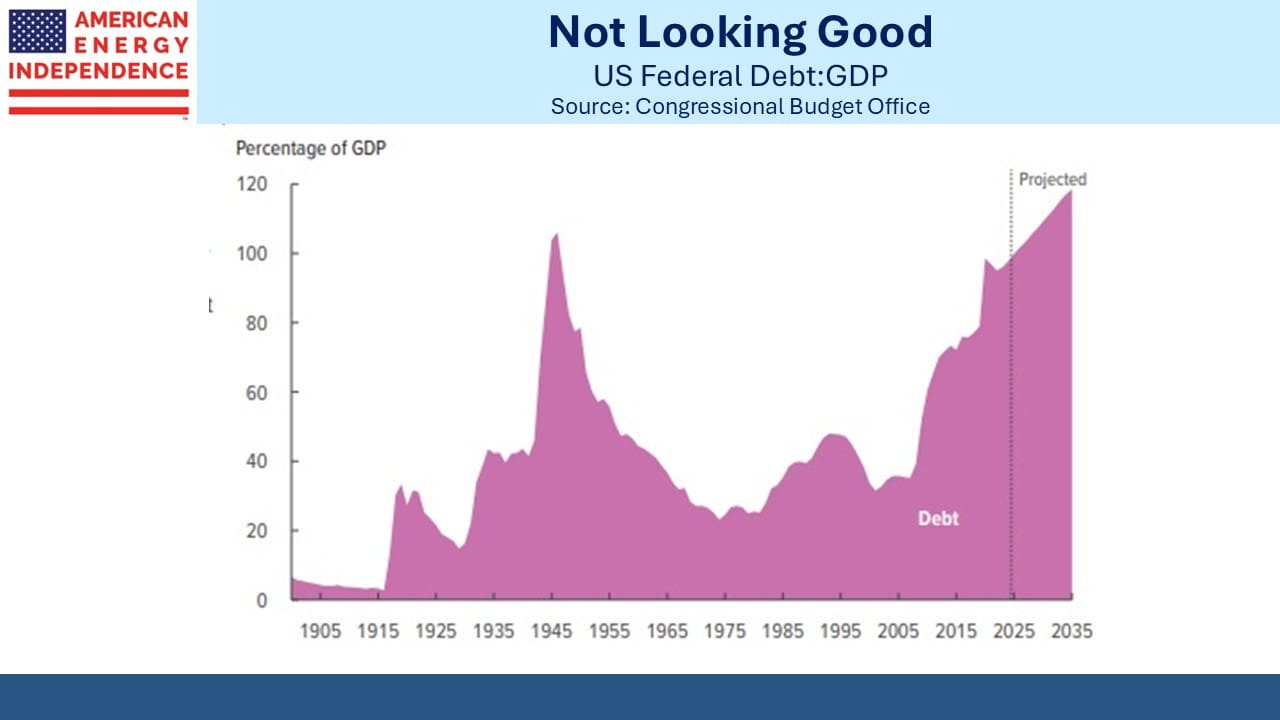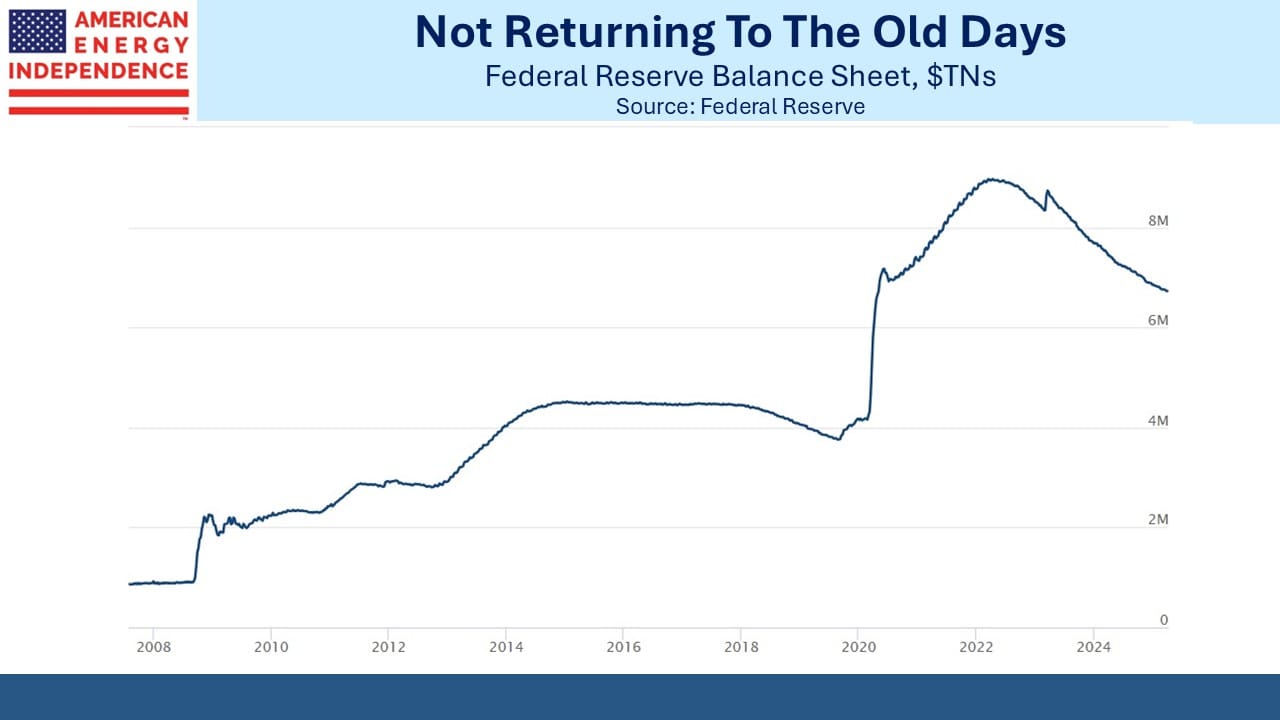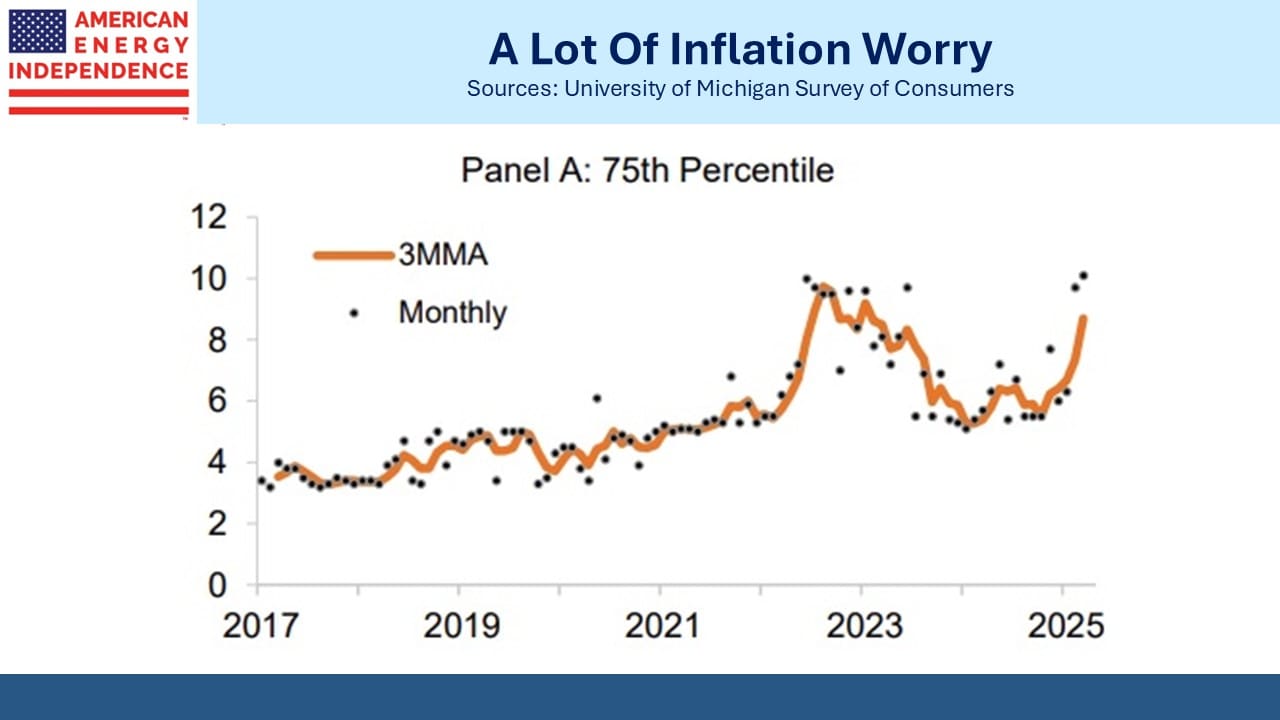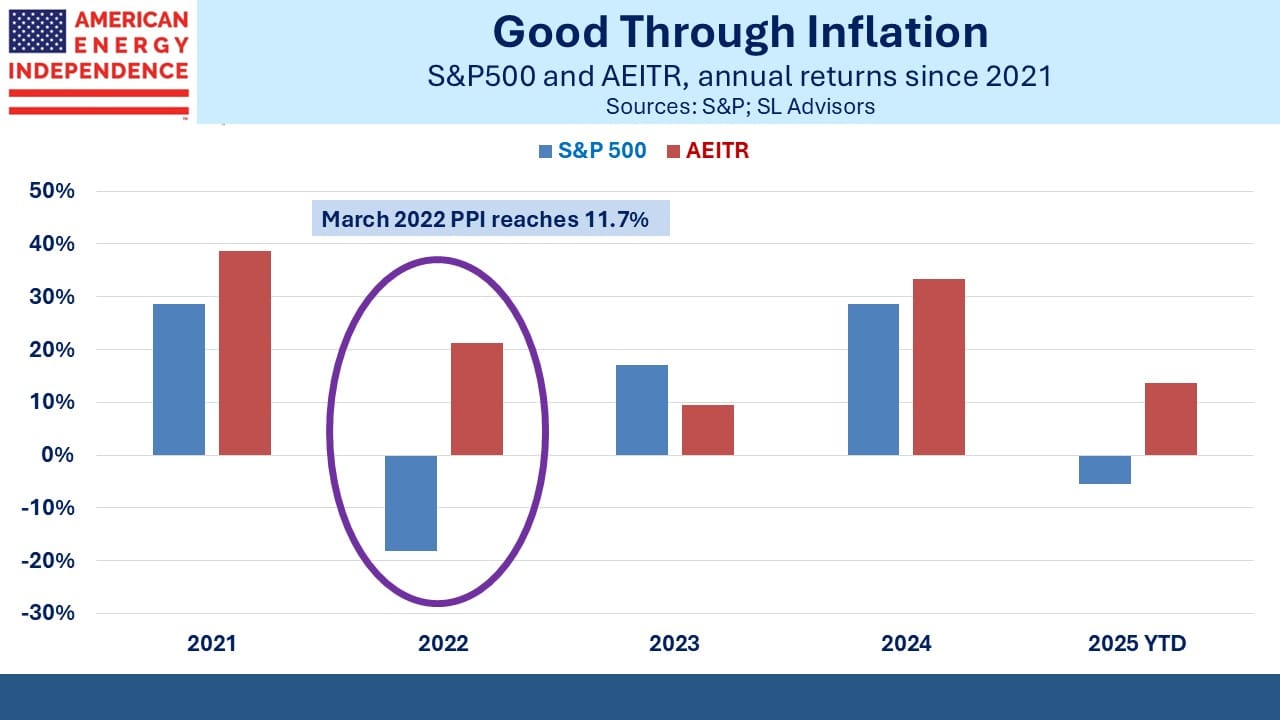Stagflation

/
On Wednesday during Q&A following Jay Powell’s speech to the Economic Club of Chicago, he warned that the near-term impact of tariffs is likely to be rising unemployment and rising inflation. The Fed’s twin mandate is one of maximum employment consistent with price stability. Powell said, “I believe that for the remainder of this year, we may deviate from these goals, or at least not make any progress, and then we will restore progress as much as we can.”
Slower growth with higher inflation is stagflation, a word Powell managed to avoid but nonetheless described. The Fed can’t address both simultaneously and will generally prioritize whichever variable is farther from their long-term goal.
The White House has made no secret of its desire for lower rates. Trump has mused openly about firing Jay Powell, but in any event his term as chair runs out in May of next year. The pool of replacements who can satisfy both the president and bond market vigilantes is a small one. Trump’s a real estate guy, and in that business inflation and low rates are a great combination.
Given the choice, the White House would prefer low rates with debt issuance heavily weighted towards short maturities. Interest expense will exceed $1TN next year, 3.2% of GDP. The budget outlook and interest rate policy are becoming inextricably entwined. Political leaders will increasingly be able to blame the Fed for our budget deficit through pursuing needlessly tight monetary policy.
The obvious casualty of pursuing the lowest possible short-term rates will be inflation. But we have a lot of debt and its trajectory is no secret. Financing it at negative real rates has been the time-honored solution of profligate governments for centuries.
In 2013 I made the case that the US was going down this road in Bonds Are Not Forever: The Crisis Facing Fixed Income Investors.
We still are.
Part of that process involves debt monetization via the Fed expanding its balance sheet. Their holdings almost reached $9TN three years ago as part of the pandemic response, but since then have declined by over $2TN. Nonetheless at $6.7TN the Fed holds $5-6TN more than needed for the smooth operation of monetary policy.
Oddly, long term yields have risen during the tariff turmoil. Theories why include liquidation of a huge basis trade by a Japanese hedge fund and concerns about unstable US policy, but there’s no consensus. A reduced trade balance will mean less foreign demand for our debt, since exporting countries will have fewer dollars to invest. This need not matter if we reduce our budget deficit commensurately, but absent that Americans will need to buy more bonds which will require higher yields.
China’s holdings are declining and will probably continue to. I doubt they’ll sell aggressively because it would be highly disruptive. But if yields move too high the Fed will conclude it must restart quantitative easing. And if it ever looks as if China is dumping bonds, Trump is just the guy to note that when you owe someone $784BN (China’s holdings as of February) it’s really the lender’s problem.
Another move from the real estate playbook.
None of this is intended to criticize. Aggressive debt management might be our best strategy when we’ve issued so much. You take the world as you find it. But surely, nobody can seriously believe in 2% inflation.
The University of Michigan consumer survey shows long term inflation expectations of 4.1%, similar to the levels reached during the pandemic. A quarter of respondents think it will exceed 10%. We have a president and budget outlook both acutely sensitive to interest rates.
Pipeline tariffs – not to be confused with import taxes – are mostly regulated to prevent unscrupulous pipeline owners from exploiting their position. Wells Fargo estimates that around half the EBITDA of the industry benefits from annual price hikes linked to the PPI. Following the 2022 inflation spike, increases of 13% were not uncommon in 2023.
This supported 5% distribution growth in 2022, a level which has continued up until today. It’s why the American Energy Independence Index (AEITR) was +21% while the S&P500 was –18% that year.
Import taxes are having a modest impact on new construction projects. Kinder Morgan recently estimated it at around 1% of major project costs on their earnings call. But the dominant inflation impact is on companies’ ability to raise prices.
This is why we believe midstream infrastructure offers one of the most attractive ways to own inflation-protected assets. I’ve been invested in the sector for over two decades, partly because of my long term debt-fueled inflation outlook described in Bonds Are Not Forever. We’re probably facing an imminent bout of inflation. This is a sector that showed its resilience in such a scenario just three years ago.

Important Disclosures
The information provided is for informational purposes only and investors should determine for themselves whether a particular service, security or product is suitable for their investment needs. The information contained herein is not complete, may not be current, is subject to change, and is subject to, and qualified in its entirety by, the more complete disclosures, risk factors and other terms that are contained in the disclosure, prospectus, and offering. Certain information herein has been obtained from third party sources and, although believed to be reliable, has not been independently verified and its accuracy or completeness cannot be guaranteed. No representation is made with respect to the accuracy, completeness or timeliness of this information. Nothing provided on this site constitutes tax advice. Individuals should seek the advice of their own tax advisor for specific information regarding tax consequences of investments. Investments in securities entail risk and are not suitable for all investors. This site is not a recommendation nor an offer to sell (or solicitation of an offer to buy) securities in the United States or in any other jurisdiction.
References to indexes and benchmarks are hypothetical illustrations of aggregate returns and do not reflect the performance of any actual investment. Investors cannot invest in an index and do not reflect the deduction of the advisor’s fees or other trading expenses. There can be no assurance that current investments will be profitable. Actual realized returns will depend on, among other factors, the value of assets and market conditions at the time of disposition, any related transaction costs, and the timing of the purchase. Indexes and benchmarks may not directly correlate or only partially relate to portfolios managed by SL Advisors as they have different underlying investments and may use different strategies or have different objectives than portfolios managed by SL Advisors (e.g. The Alerian index is a group MLP securities in the oil and gas industries. Portfolios may not include the same investments that are included in the Alerian Index. The S & P Index does not directly relate to investment strategies managed by SL Advisers.)
This site may contain forward-looking statements relating to the objectives, opportunities, and the future performance of the U.S. market generally. Forward-looking statements may be identified by the use of such words as; “believe,” “expect,” “anticipate,” “should,” “planned,” “estimated,” “potential” and other similar terms. Examples of forward-looking statements include, but are not limited to, estimates with respect to financial condition, results of operations, and success or lack of success of any particular investment strategy. All are subject to various factors, including, but not limited to general and local economic conditions, changing levels of competition within certain industries and markets, changes in interest rates, changes in legislation or regulation, and other economic, competitive, governmental, regulatory and technological factors affecting a portfolio’s operations that could cause actual results to differ materially from projected results. Such statements are forward-looking in nature and involves a number of known and unknown risks, uncertainties and other factors, and accordingly, actual results may differ materially from those reflected or contemplated in such forward-looking statements. Prospective investors are cautioned not to place undue reliance on any forward-looking statements or examples. None of SL Advisors LLC or any of its affiliates or principals nor any other individual or entity assumes any obligation to update any forward-looking statements as a result of new information, subsequent events or any other circumstances. All statements made herein speak only as of the date that they were made. r
Certain hyperlinks or referenced websites on the Site, if any, are for your convenience and forward you to third parties’ websites, which generally are recognized by their top level domain name. Any descriptions of, references to, or links to other products, publications or services does not constitute an endorsement, authorization, sponsorship by or affiliation with SL Advisors LLC with respect to any linked site or its sponsor, unless expressly stated by SL Advisors LLC. Any such information, products or sites have not necessarily been reviewed by SL Advisors LLC and are provided or maintained by third parties over whom SL Advisors LLC exercise no control. SL Advisors LLC expressly disclaim any responsibility for the content, the accuracy of the information, and/or quality of products or services provided by or advertised on these third-party sites.
All investment strategies have the potential for profit or loss. Different types of investments involve varying degrees of risk, and there can be no assurance that any specific investment will be suitable or profitable for a client’s investment portfolio.
Past performance of the American Energy Independence Index is not indicative of future returns.






Leave a Reply
Want to join the discussion?Feel free to contribute!